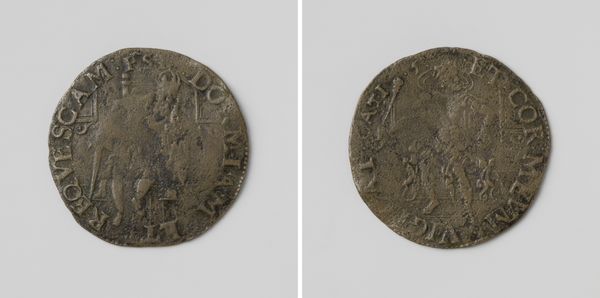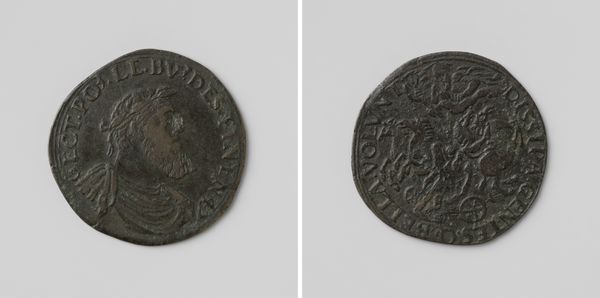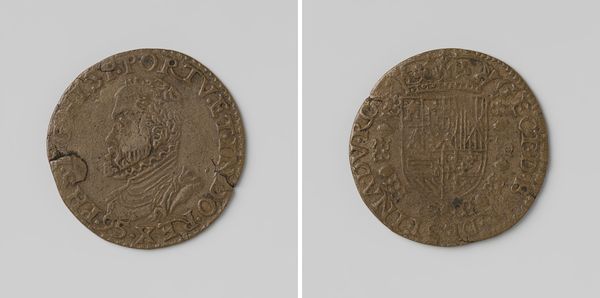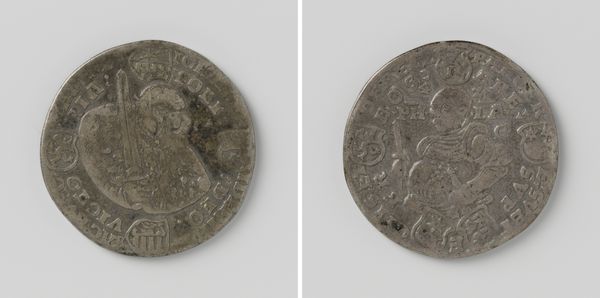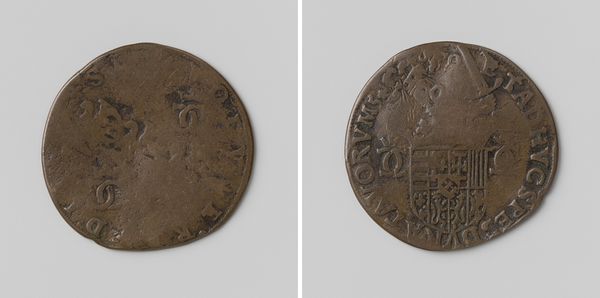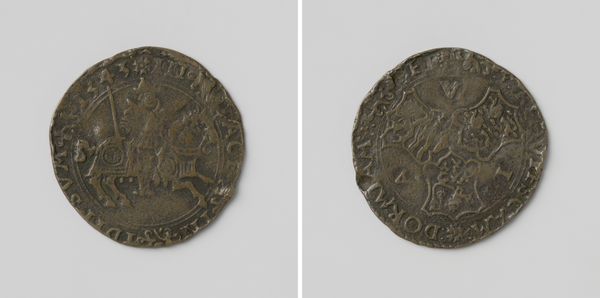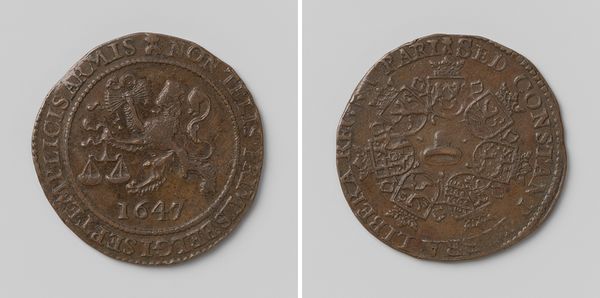
Karel V, Duits keizer, bereidt zich voor op de oorlog tegen Maarten van Rossum, rekenpenning ten behoeve van Mr. Claes van Essche, lid van 1542
0:00
0:00
metal, relief, sculpture
#
portrait
#
medieval
#
metal
#
sculpture
#
relief
#
sculpture
#
history-painting
Dimensions: diameter 2.7 cm, weight 3.28 gr
Copyright: Rijks Museum: Open Domain
Curator: Let's examine this striking metal relief, created around 1542, titled "Karel V, Duits keizer, bereidt zich voor op de oorlog tegen Maarten van Rossum, rekenpenning ten behoeve van Mr. Claes van Essche, lid van…" quite a mouthful, isn’t it? Editor: My first impression? Somber. Despite the small scale, there's a weightiness conveyed through the dark metal and detailed, almost claustrophobic, composition. The forms appear intentionally flattened, symbolic, aren't they? Curator: Absolutely. Considering this piece functioned as a commemorative medal for Claes van Essche, a prominent figure, it reflects the specific political and economic climate surrounding Charles V’s campaigns. The very act of minting and distributing such medals involved many artisans, showcasing not just artistic skill, but the means by which powerful messages were circulated at that time. Editor: The composition itself, the circular boundary—does it not invoke a sense of restriction, almost entrapment? Notice the use of lettering and how that framing functions, contributing to a sense of confinement—that can also suggest something deeper about Charles’s imperial ambitions. Curator: And don't overlook the choice of metal. This isn't gold or silver, often associated with rulers. Its base material implies perhaps a pragmatic assessment of resources needed for war or a reflection of more modest economic circumstances during a period of intense conflict. Editor: So the value wasn’t just intrinsic, but an intentional communication about production—both material and propagandistic. Looking closely, I'm struck by the crudeness, if you will, which seems oddly deliberate, almost obscuring its deeper meaning and challenging any clean representation. Curator: I agree! This tension between symbolic intent and material execution opens it up for varied interpretations, highlighting labor, materials, and social contexts, challenging traditional art narratives by examining labor, materiality, and even consumption through such an artifact. Editor: I see now. Beyond surface aesthetics and allegorical representation, it challenges viewers to see how powerful symbolic representations exist within a tightly woven visual composition that ultimately reinforces Charles' might and, by extension, those who serve him! Curator: Precisely! Looking at the work and interpreting the symbolic representations in their historical context can really alter its purpose in its creation, beyond its current valuation as an antique art object. Editor: Yes. We went deep into process, material, and structural significance which in turn reshapes our perception. The interplay enriches the artifact with renewed vigor and layers of intent, far beyond simple observation!
Comments
No comments
Be the first to comment and join the conversation on the ultimate creative platform.
